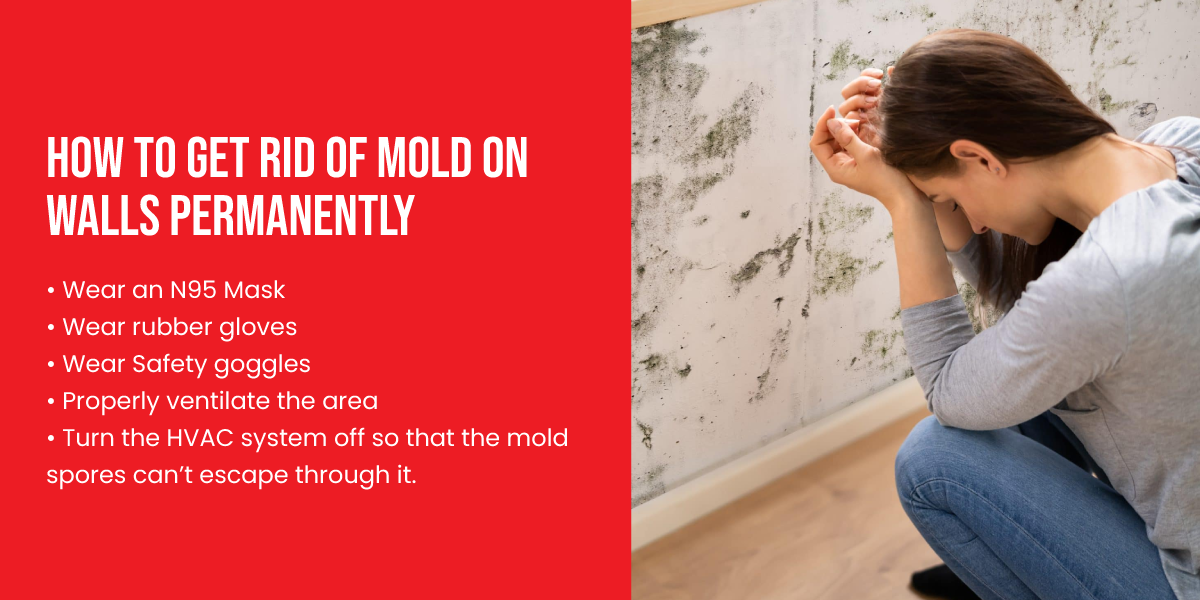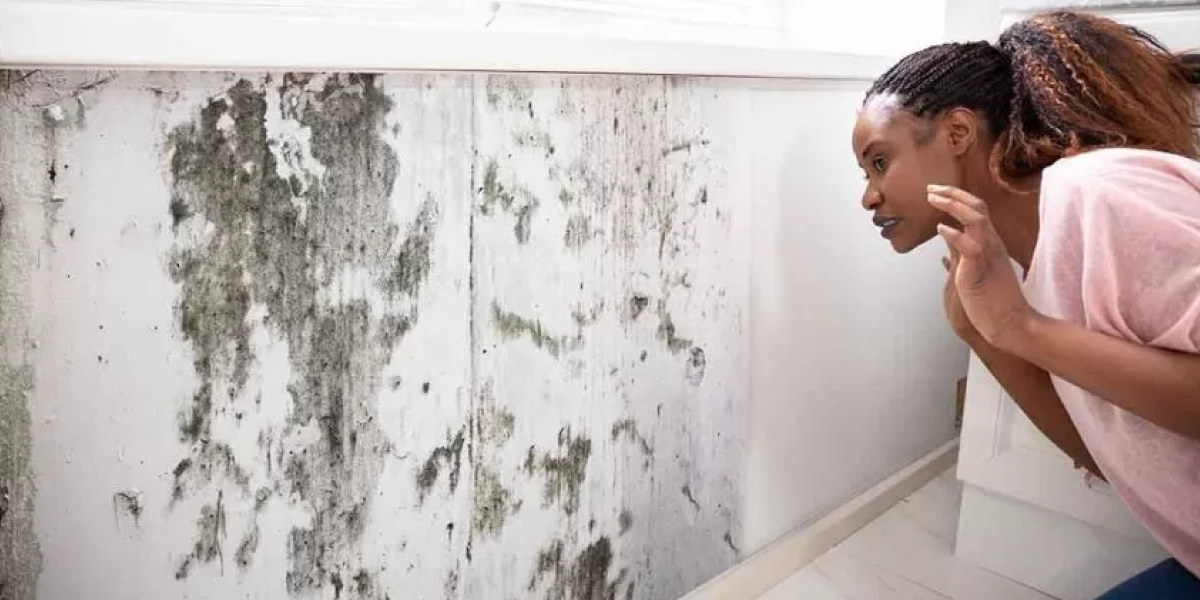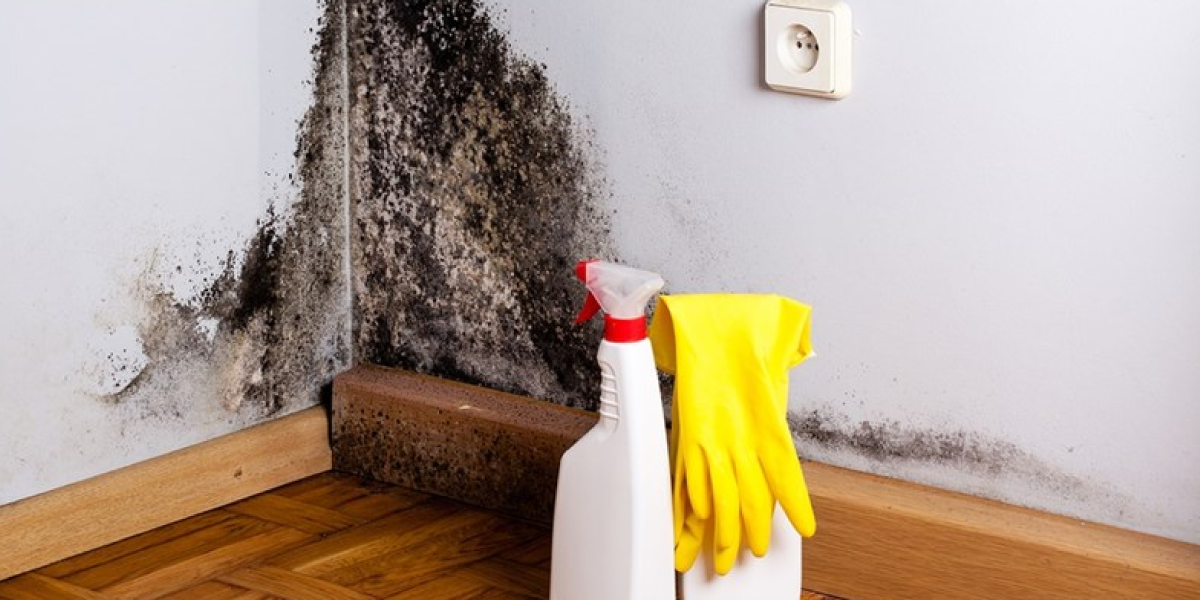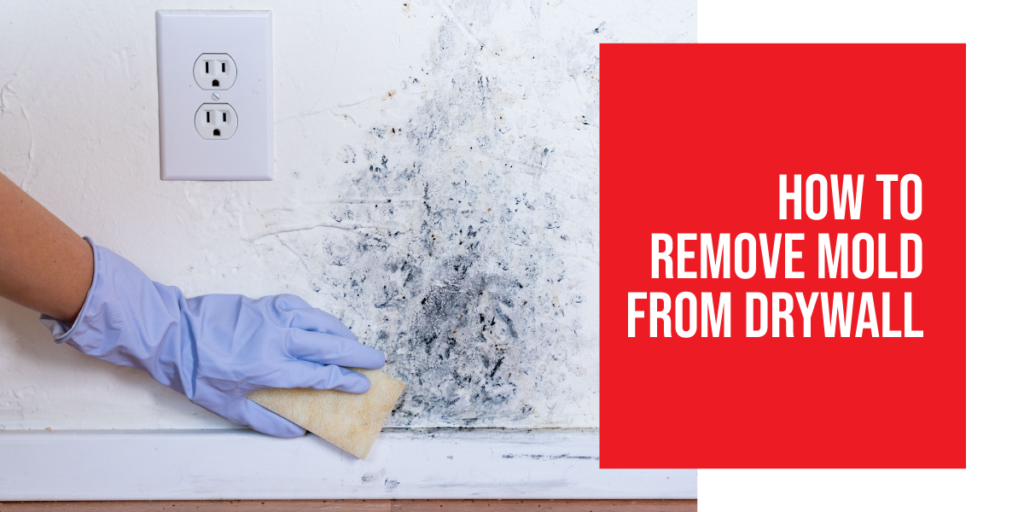Drywall is one of the most common places for fungal growth. Humid conditions are the main reason for these fungi to grow in the drywall. You might wonder how to remove mold from drywall. Depending on whether the drywall is porous or painted, there are several methods for removing mold from it. You can use either dish soap or white vinegar if the drywall is smooth. On the other hand, you will have to remove the affected area of the drywall.
Molds are a type of fungi that thrive in humid areas, like most other fungi. Your drywall might have mold growing on it due to leaky water lines, humid conditions inside the home, or condensation. This can cause asthma, increased fatigue, and allergic reactions. Which is why it is a must to know how to remove mold from drywall.
Let’s take a look at the mold removal process from drywall.
How to get rid of mold on walls permanently

There are quite a few ways to kill mold on drywall, depending on the type of wall. But for all of these mold removal procedures, you have to follow a few precautionary steps. These are:
- Wear an N95 Mask
- Wear rubber gloves
- Wear Safety goggles
- Properly ventilate the area
- Turn the HVAC system off so that the mold spores can’t escape through it.
Let’s have a look at all of the ways of treating mold on drywall.
How to clean up mold on drywall: Painted

If you have mold on your painted drywall, you don’t have to worry that much. This is because mold can’t penetrate much into painted and sealed drywall. You will only need the following materials to clean this type of mold:
- Dish Soap/Detergent or White Vinegar
- Spray Bottle
- Scrub Brush
- Towels or soft cloths
- 3% Hydrogen peroxide solution (Not mandatory)
Now, here are the steps to remove mold on walls
- First, you need equal parts water with equal parts white vinegar. If you are using detergent or dish soap, then use a tablespoon of it in a quart of warm water.
- After pouring the solution into the spray bottle, you now need to spray it all over the affected area.
- Let the cleaning solution wait for about 15 minutes.
- Now, use a scrub brush to properly brush the area.
- Clean the water with a towel or a clean cloth.
- If you want to disinfect the cleaned area, then use a 3% solution of Hydrogen peroxide, and then wipe everything with the towel.
How to clean up mold on drywall: Non-Sealed

If your drywall is not painted, then you have a problem on your hands with mold. The mold can grow deep into the drywall by getting into the pores. In this case, you will need the following:
- A utility knife
- A tape and a plastic sheet
- HEPA vacuum
- A mold-resistant drywall
- Screws, mud and paint
Here is a step-by-step guide to removing mold on porous drywall:
- Use the plastic sheet to isolate the area.
- Mark the mold-affected area. Then cut about 12 inches beyond the area where mold is visible.
- Put the moldy drywall in a tight plastic bag and dispose of it carefully.
- Clean the area around the removed drywall.
- Now, use white vinegar, hydrogen peroxide, or industrial mold removers to clean the framing around the previously moldy area.
- Use a dehumidifier to completely dry off the area. You can also use a fan to do so, although it will take more time.
- Install the new drywall, seal it, and then paint the wall with a mold-resistant paint.
Option 3: Call in the professional

Now, if the mold seems manageable, you can manage removing it and restoring the drywall by yourself. But, if you are too late noticing the mold, and it has spread on an area more than 10 square feet, then it is best to call professional mold cleaning services. These services have the means, tools, and expertise to get rid of black mold on drywall.
How to prevent mold on Sheetrock
It is better to prevent mold from growing on drywall instead of going through the hassle of removing it, especially if the infestation is on a large scale. Here are a few tips to prevent mold growth on drywall.
- Install a dehumidifier in your house. Mold can not grow in conditions having less than 50% humidity.
- Look out for leaks and fix them as soon as possible. Also, improve the ventilation in your home, especially in your bathroom and kitchen.
- Paint the wall with mold and water-resistant paint and primer.
- Clean any spills as soon as possible.
Finally….
Mold, or black mold in particular, is extremely harmful to health. Not only that, once it grows deep, it is very tough to get rid of it. So, know how to remove mold from drywall, and lead a clean, healthy, and hygienic life.
FAQ
1. What kills mold on drywall?
As far as drywall mold killers go, you have a lot of options that work in varying degrees. First, you have white vinegar, which is a well-known mold killer. Then you have hydrogen peroxide, which is another excellent mold killer. Next, you have baking soda, which is great for surface-level mold. Finally, you have commercial mold cleaners that are used on a more widespread basis.
2. Can drywall with mold be saved?
Yes, a moldy drywall can be saved. It all depends on what type of wall you have and how deep the mold has grown. If the wall is painted, then you don’t have to even put a scratch on the wall. On the other hand, for porous walls, you need to remove a small part of the wall. But if the mold has grown on the entire wall, then you might have to remove all of it.
3. Can I remove moldy drywall myself?
Of course, you can remove the moldy drywall yourself. It is very easy to remove and repair a moldy drywall. All you need are the right tools and a bit of elbow grease to remove the moldy drywall. But if you are not feeling comfortable, you can always count on professionals to do it for you.
4. Is vinegar or bleach better for mold on drywall?
Although bleach is a pretty great mold killer, they are not suitable for drywall, and certainly not better than vinegar. While vinegar kills both surface-level and deep-rooted mold, bleach can not penetrate the pores of the wall. On top of that, it damages the drywall itself, making it counterproductive to use. Finally, bleach is harmful to humans, unlike vinegar.

